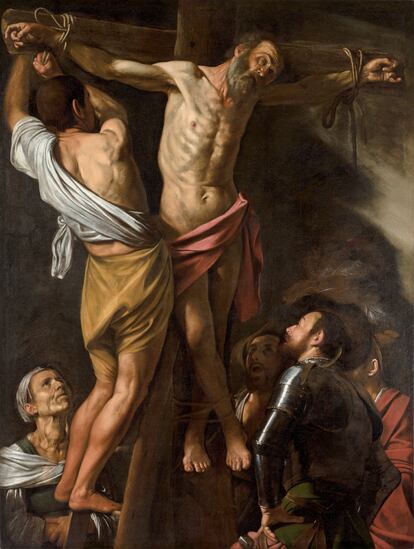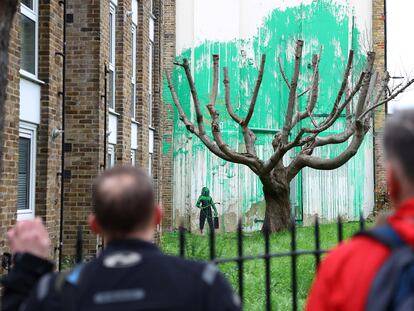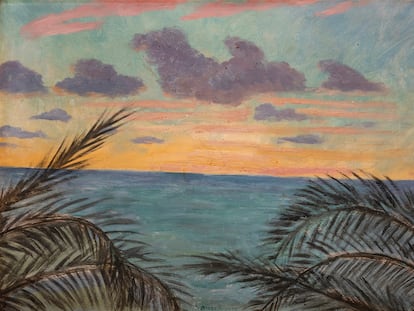‘Deaccession’ against white supremacy in art
Selling artwork from museums and public collections keeps them relevant, connecting them to the contemporary world and society

Alienate the inalienable. Spanish legislation prohibits the disposal of any work of art that has been designated as national heritage. Madrid’s Prado Museum, with around 27,000 pieces, is not allowed to sell any, even if they are considered irrelevant. In 1976, the Spanish government authorized the sale of Caravaggio’s The Crucifixion of Saint Andrew (1607), which now belongs to the Cleveland Museum of Art. “The biggest mistake in Spanish art history.” The late Francisco Calvo Serraller, a notable art history professor, used these words to express the impact of losing the painting.
Fifty years have gone by. Different times, different societies. Yet, a major debate in the art world persists. In the U.S., selling artworks is widespread, from the Metropolitan Museum in New York to the San Francisco Museum of Modern Art. They do it to enhance collections or raise money. But the practice raises a fundamental question: What is the role of a museum today? A haven for elites or a hub for the community? Should an artist who donates a piece expect it to be on public display forever? In Baltimore, where more than 65% of the population is Black, is it justifiable that white art overshadows African-American culture? Curator Glenn Adamson called it “progressive deaccession” — a concerted effort to reduce white supremacy in art collections.
Everything changes. What one generation views as a masterpiece, another might see as inconsequential. Would selling it be a betrayal of beliefs, a form of apostasy? “From an ethical perspective, there’s nothing stopping you. But you should be very conservative,” said Manuel Borja-Villel, museum advisor to the government of Catalonia in Spain. Disposal of one piece should always lead to buying others. “A collection always has many layers, and a museum director should never undo what another team has put together.” However, no one wants to be constantly swimming against the tides of their times. “I’d love to acquire pieces by amazing women artists. I’d even be willing to dispose of a piece by another artist to make it happen,” said Guillermo Solana, artistic director of the Thyssen-Bornemisza National Museum in Madrid.
In the United States, many small and medium-sized semi-public or private institutions rely on donations that have dried up in recent years. In 2020, the Everson Museum in New York sold its only Jackson Pollock (Red Composition, 1946) for $13 million in the middle of the pandemic to buy works by Black and female creators. Despite the empty coffers, we should abandon the neoliberal dogma that all problems can be solved by market forces. The Meadows Museum in Dallas avoids such thinking. “We carefully consider each purchase and make sure we have the support of Southern Methodist University and the Meadows Foundation, our main sponsor,” said museum director Amanda Dotseth. Maybe in 2024, a collection needs to stop hoarding and get rid of a few things, even though that means going down a one-way street.
Gabriele Finaldi, director of the National Gallery in London, knows what needs to be done despite having the same national heritage restrictions as the Prado. “Taking care of the history of art collecting is crucial. We don’t want to scare off donors, and I understand that mistakes happen. The Met actually sold a painting by Artemisia Gentileschi [the baroque painter] because they didn’t consider it a significant piece.” But was it hanging on the right walls? Nicola Spinosa, former head of the Capodimonte Museum in Naples, says European works of art in the U.S. are like exiled citizens because they embody the civil, cultural, political and religious history of the cities and countries where they were created. What do these exiles represent in the foreign countries where they now live? That’s the hardest part of the puzzle to figure out.
Sign up for our weekly newsletter to get more English-language news coverage from EL PAÍS USA Edition
Tu suscripción se está usando en otro dispositivo
¿Quieres añadir otro usuario a tu suscripción?
Si continúas leyendo en este dispositivo, no se podrá leer en el otro.
FlechaTu suscripción se está usando en otro dispositivo y solo puedes acceder a EL PAÍS desde un dispositivo a la vez.
Si quieres compartir tu cuenta, cambia tu suscripción a la modalidad Premium, así podrás añadir otro usuario. Cada uno accederá con su propia cuenta de email, lo que os permitirá personalizar vuestra experiencia en EL PAÍS.
¿Tienes una suscripción de empresa? Accede aquí para contratar más cuentas.
En el caso de no saber quién está usando tu cuenta, te recomendamos cambiar tu contraseña aquí.
Si decides continuar compartiendo tu cuenta, este mensaje se mostrará en tu dispositivo y en el de la otra persona que está usando tu cuenta de forma indefinida, afectando a tu experiencia de lectura. Puedes consultar aquí los términos y condiciones de la suscripción digital.
More information
Archived In
Últimas noticias
Most viewed
- Sinaloa Cartel war is taking its toll on Los Chapitos
- Oona Chaplin: ‘I told James Cameron that I was living in a treehouse and starting a permaculture project with a friend’
- Reinhard Genzel, Nobel laureate in physics: ‘One-minute videos will never give you the truth’
- Why the price of coffee has skyrocketed: from Brazilian plantations to specialty coffee houses
- Silver prices are going crazy: This is what’s fueling the rally











































